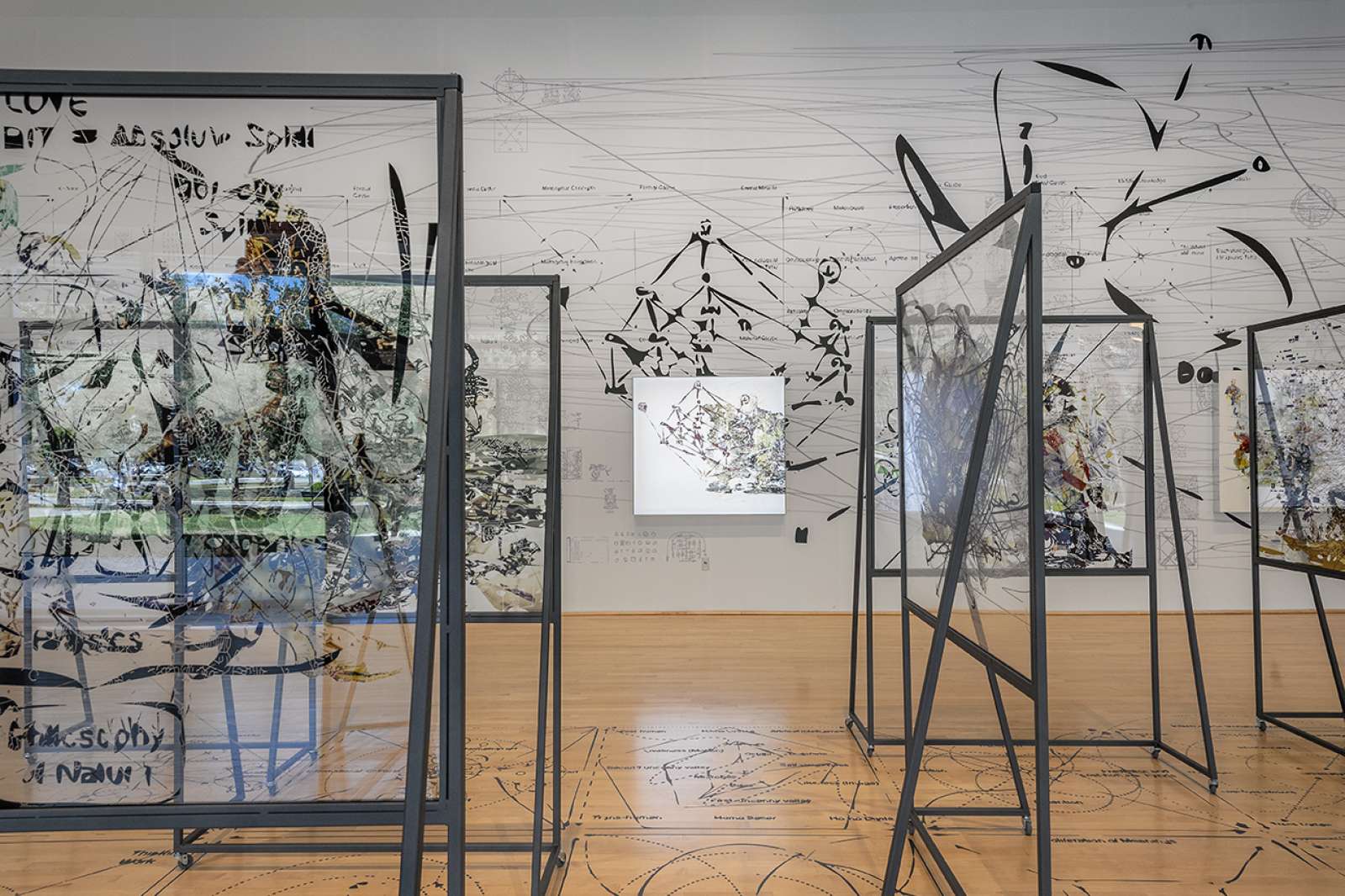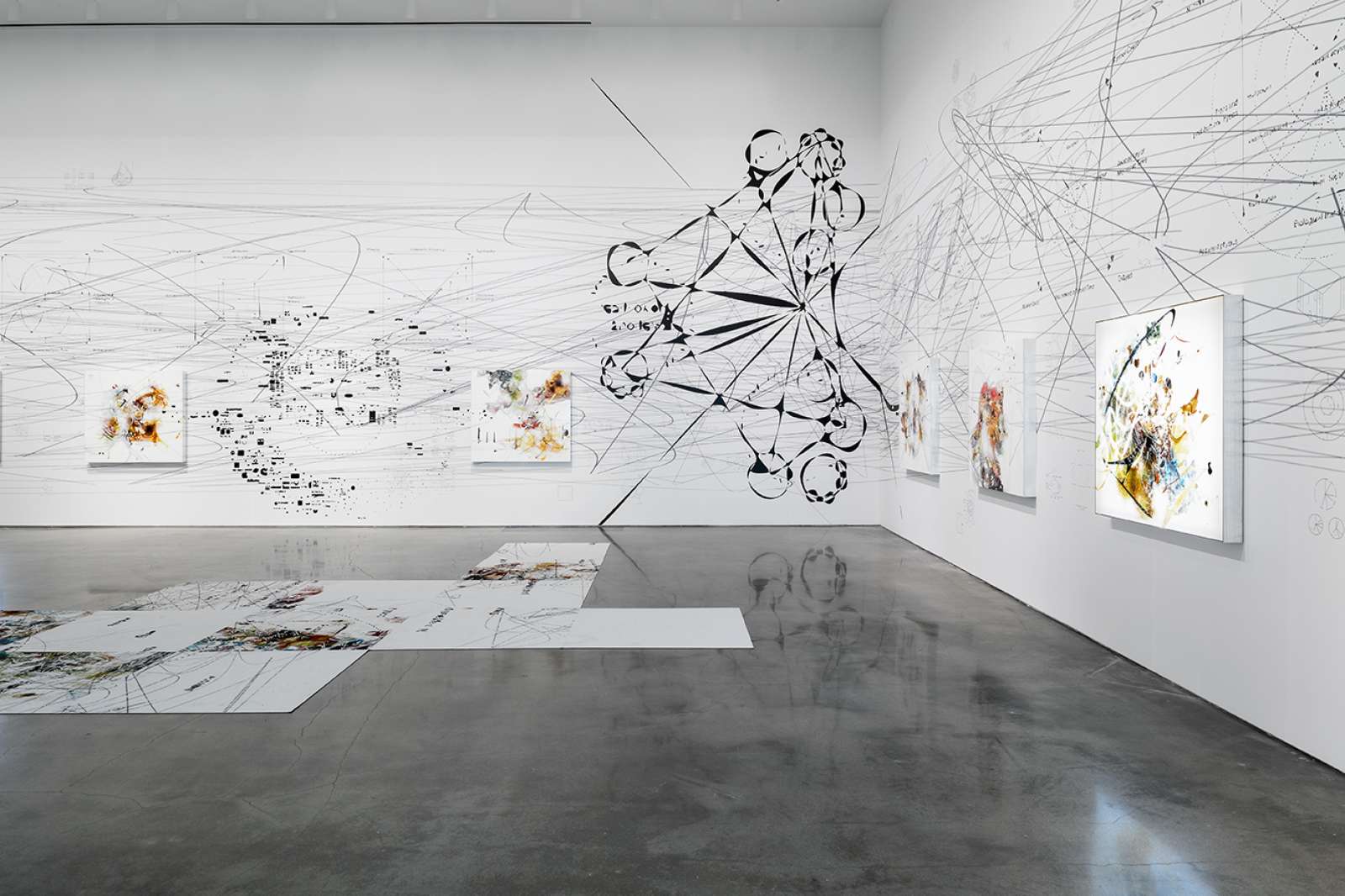Matthew Ritchie
The Demon in the Diagram
The Moody will present an engaging new exhibition and public program by New York-based artist Matthew Ritchie (b. 1964). The Demon in the Diagram is a multi-layered, site-specific installation that includes paintings, lightboxes, an interactive floor and audio work commissioned for the Moody, and a virtual reality component. The project highlights Ritchie’s deep investigation into the history of the diagram as a means of mapping both human knowledge and lived experience. On view September 21 through December 22, 2018, the exhibition will be installed in the Moody’s Central and Brown Foundation Galleries.
The Demon in the Diagram explores the structures created to map the history of time in the same way Ritchie’s earlier projects examined graphic diagrams of space. The exhibition includes elements from Ritchie’s newest body of work, Time Diagrams, an ambitious one-hundred-part sequence of diagrammatic works that attempt to chronicle structural features of human thought over the past 5,000 years. Audiences are invited to engage with two interactive elements commissioned for the Moody: a collaborative 3-D sculptural environment called ‘the Screen Game’ (in a playful nod to English science fiction novelist J.G. Ballard) that explores music and pedagogy through an interactive soundscape created with Ritchie’s longtime collaborators, musicians Kelley Deal, lead guitarist of the Breeders, and noted composer and clarinetist Evan Ziporyn, and an immersive virtual reality (VR) work that inverts the familiar role of VR by open-casting any viewer as a performer, a ghostlike figure nestled inside the demon.
This project, Ritchie’s most complex to date, has been designed specifically for the Moody’s galleries as an open experiment in pedagogy. Both visitors and students will have the opportunity to participate in many aspects of the installation. For example, they can contribute to a durational musical work that will evolve over the fall months. The combination of elements will immerse the viewer in Ritchie’s creative vision of human history as a debatable and reconfigurable space, while encouraging the hands-on exploration of multiple systems of meaning.









